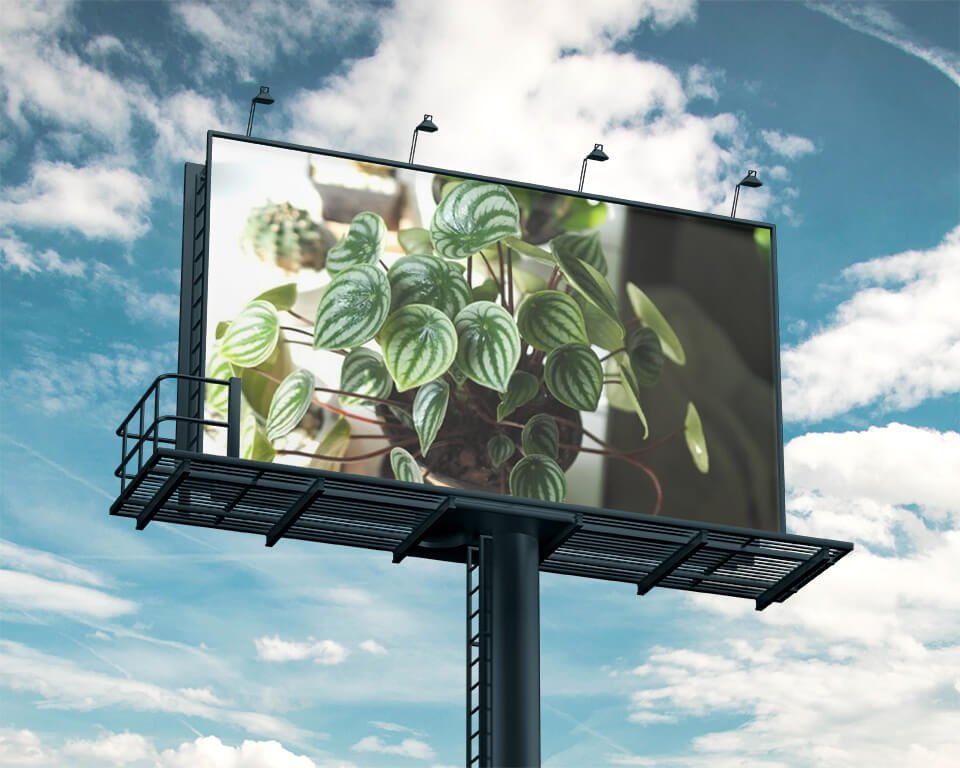[Ebook Việt hoá] Living With Plants: A Guide to Indoor Gardening (2017) - Sophie Lee
[Ebook Việt Hoá] Indoor Gardening (2017): Getting Started (Bắt đầu)
- Nguồn: Ebook Living With Plants: A Guide to Indoor Gardening (2017) – Sophie Lee
- Biên tập: Dũng Cá Xinh
- Dịch: Huyền Nguyễn
English
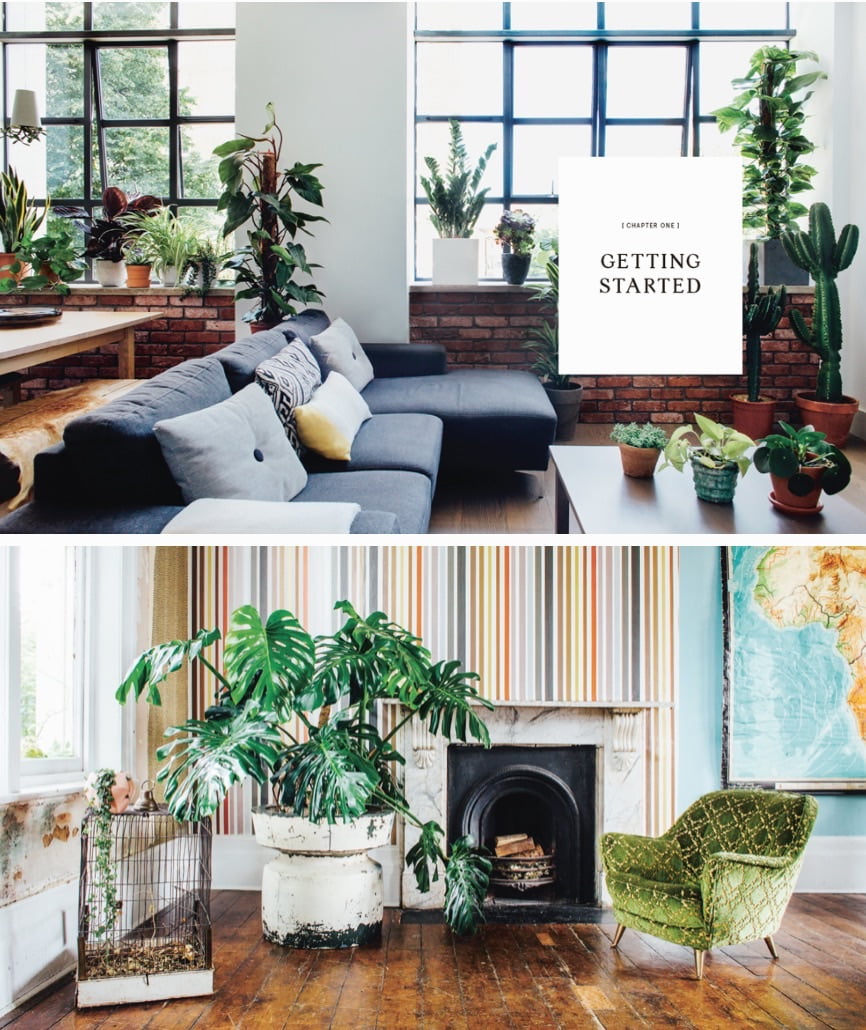
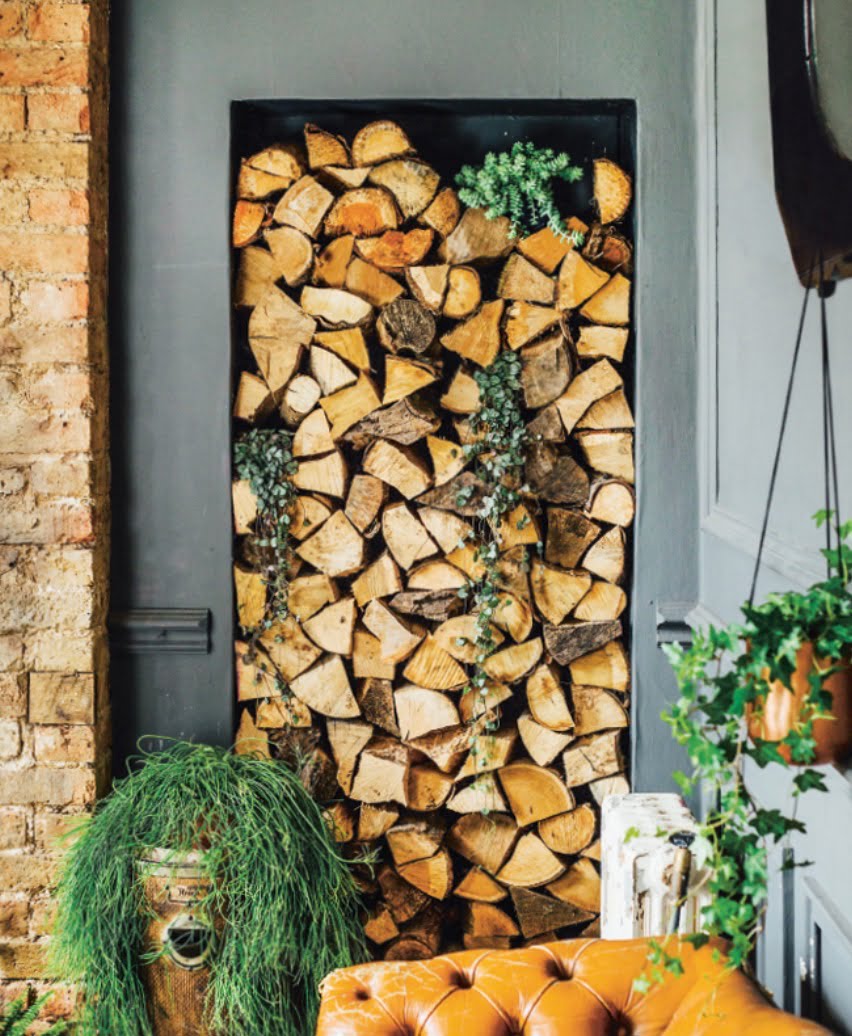
PICKING THE RIGHT PLANTS FOR YOU & YOUR HOME
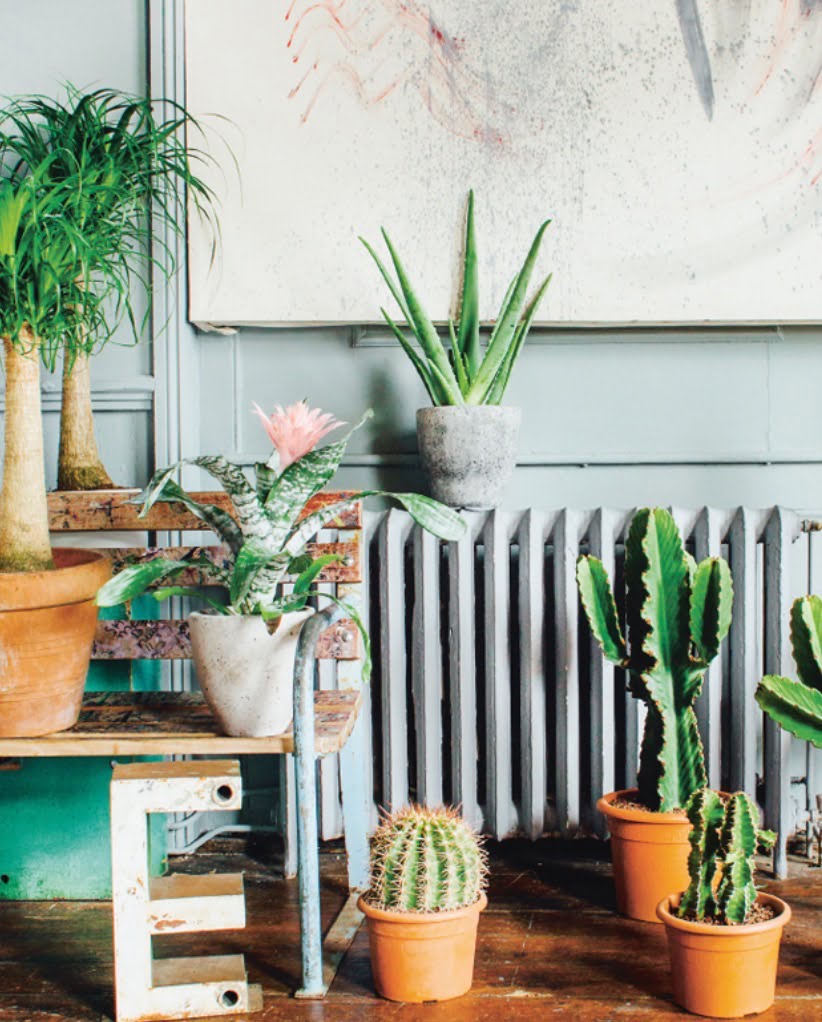
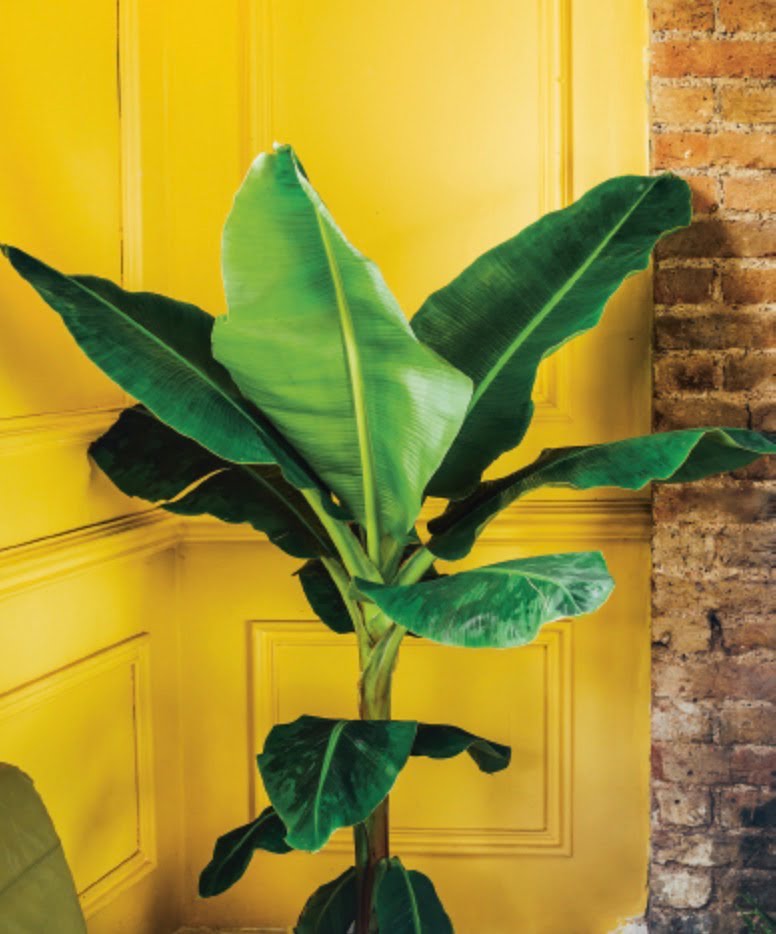
So you have decided to make the commitment to embark on the indoor plant wagon. First of all, stand back and look at each of your rooms. Then answer the following questions: How much space do you have? Do you want to go for a jungle style or something more minimal? What are the light levels like? Do you have hanging space, room on a cabinet for a few pots, or a whole bookcase that needs jazzing up with plants?
It is important to think about what size plants will best suit your space – will several small potted plants fit better or just one large statement plant? Big plants need enough room to encourage their sculptural quality and architectural form, so there is no point dwarfing them in a small space.
Large plants look great in contemporary, open-plan areas with clean lines and minimalist décor. However, if your home is more crowded and bursting with personality I would recommend investing in some smaller plants to add character.
If you are totally new to keeping plants, it is a good idea to start with a few small and medium-sized pots containing hardy, low-maintenance plants (Easy-going plants for beginners). You will soon experience that joyous moment when a new leaf comes through on your plant.
I will guide you on which types of plant look great in which containers, as well as combinations you should avoid. As a rough guide, a two-thirds to one-third proportion works well. With a large pot, two-thirds should be plant and one-third container. But you do not have to stick to this rule and with practice you can manipulate scale and proportion to great effect. Large containers can look striking when filled with low-growing textural plants, such as Maranta leuconeura (prayer plant), making a feature of the pot. However, if you go for smaller plants that spill over the edges of the container, interest is focused on the plant.
Along with using pots, I will show you some different ways to style your home with plants, such as creating a terrarium (How to Make a Closed Terrarium and How to Make an Open Terrarium), hanging kokedama moss balls (Make a Kokedama), or making a macramé plant hanger to suspend your trailing plants from the ceiling (Make a Macramé Plant Hanger). You need to be careful that the plant and container are in keeping with the style of each room, so that your indoor garden enhances your interior.
Bookcases and shelves are a great place to add some greenery. Place a few trailing plants among your favourite books, such as a Ceropegia woodii (string of hearts) or a Philodendron scandens (heartleaf philodendron). A coffee table or low-level shelving unit can become the centre of attention with a striking plant or a collection of different succulents placed on top. I believe that plants look best grouped together in odd numbers, but if you are into minimalism, an even number of plants arranged in a grid or geometric shape works brilliantly to create a very structured, organised effect. The choice is yours!
The celebrated German architect Mies van der Rohe famously declared that less is more; this does not apply with plants. More is more, and you will soon become addicted to caring for your plant collection. A key way to pick out different plants that look good together is to find different shapes and textures that complement each other. If you are finishing an interior, the plants you choose should be compatible with the space you are putting them into. There is no point placing a huge Monstera deliciosa (Swiss cheese plant) in a tiny bathroom: it just won’t look right! It should be given enough space to showcase its dramatic sculptural appearance. Don’t be afraid to try out placing your plants in a few different locations around the house to see where they look best.
Many common house plants are prized for their wonderful leaves, which almost look as if they are made of painted silk. This is what makes the magical world of plants so interesting: their different shapes, their spots, pleats, hairs, spikes and grooves. As well as considering the space you want to put your plants in, think about whether you want “colourful leaves, such as a Calathea roseopicta (rose-painted calathea), or something simple and striking like a Pilea peperomioides (Chinese money plant).
Some plants need more care than others, so once you have established whether you are going for sculptural large plants or miniature pots of cacti, you need to determine the level of maintenance you will be able to commit to. As well as the aesthetics of the room you want to keep plants in, you also need to consider the environmental conditions. Some plants need lots of light (see Light & Shade for more information on light levels), others more humidity. Your goal is to simulate a plant’s native environment in order for it to flourish.
Plants need six key nutrients to survive: carbon, hydrogen and oxygen (which they get from water and air) and nitrogen, phosphorous and potassium, which come from their growing medium and so you will need to provide. When grown in the ground, these last three elements are naturally replenished, but because our plants will live in pots we need to manually top them up with fertiliser as the plant uses up the nutrients. I recommend using an organic fertiliser, which will not only feed the plant but also the soil.
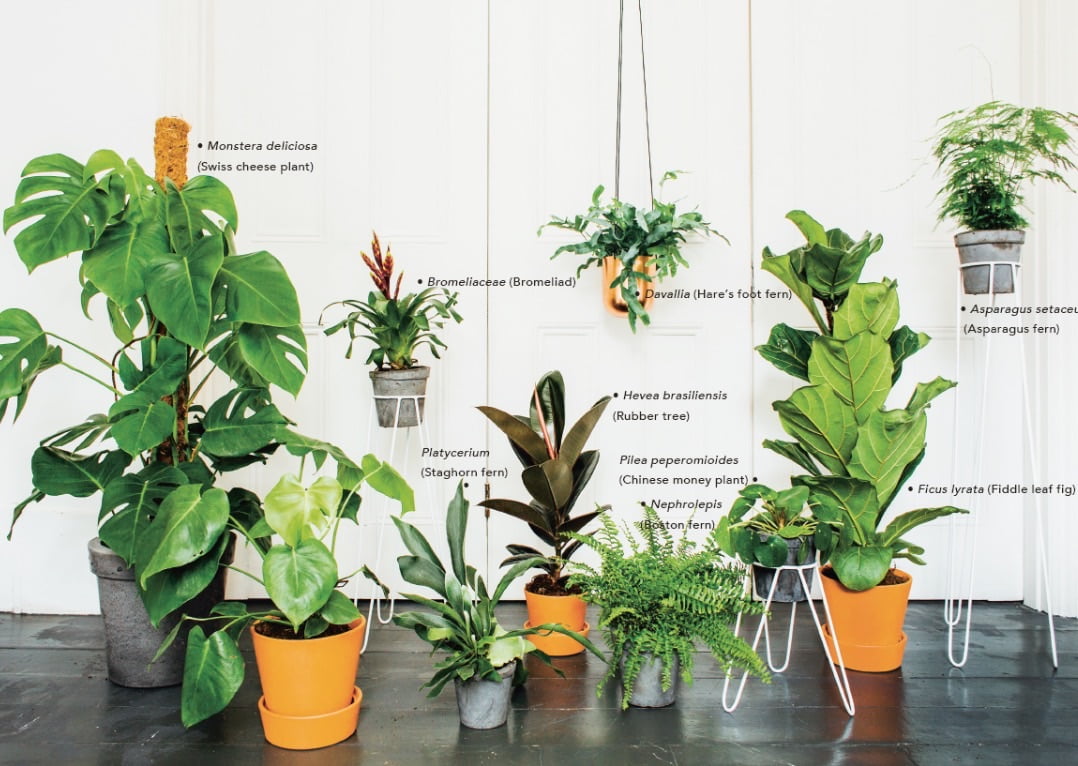
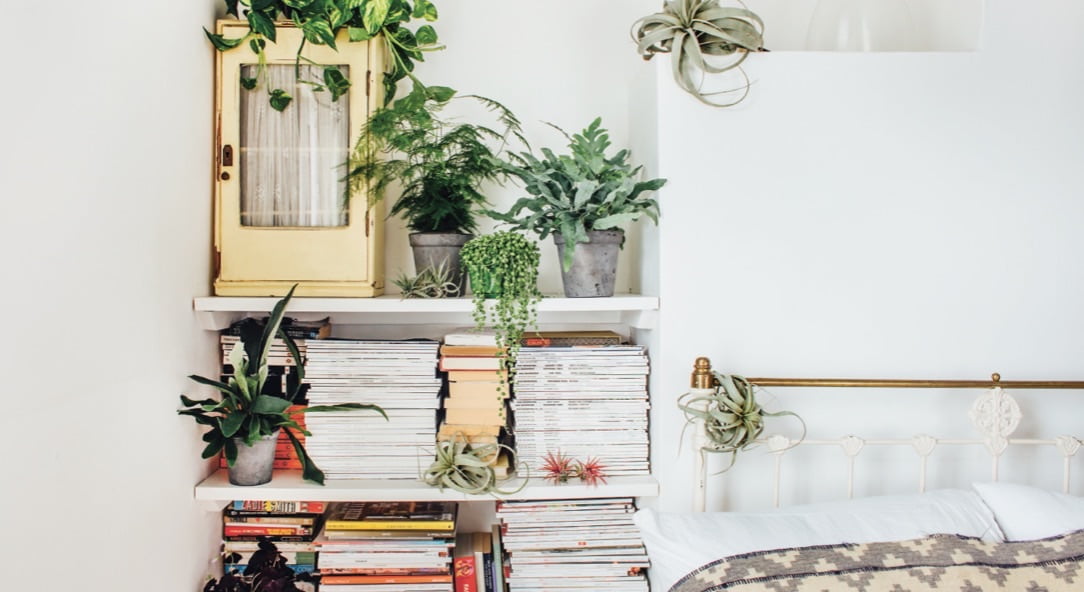
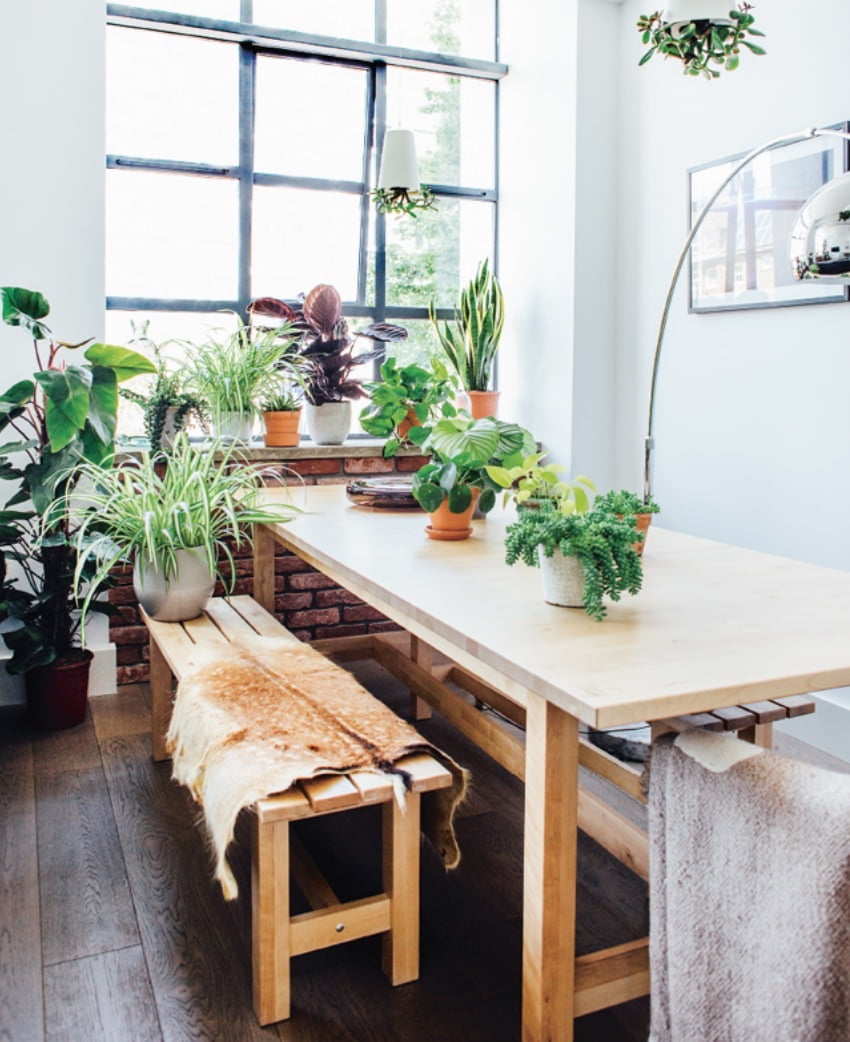
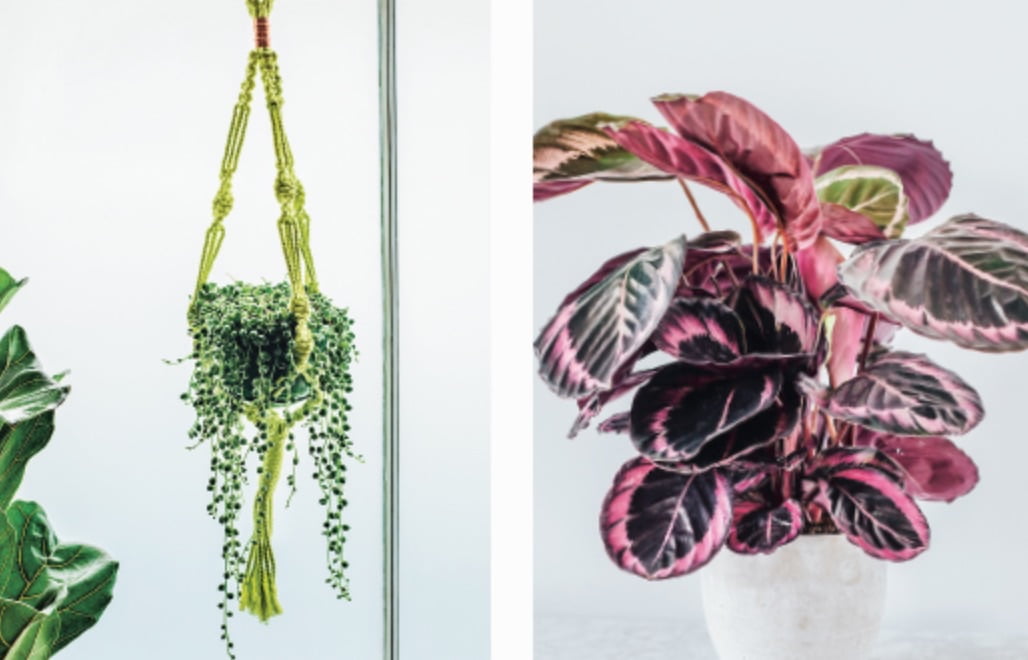
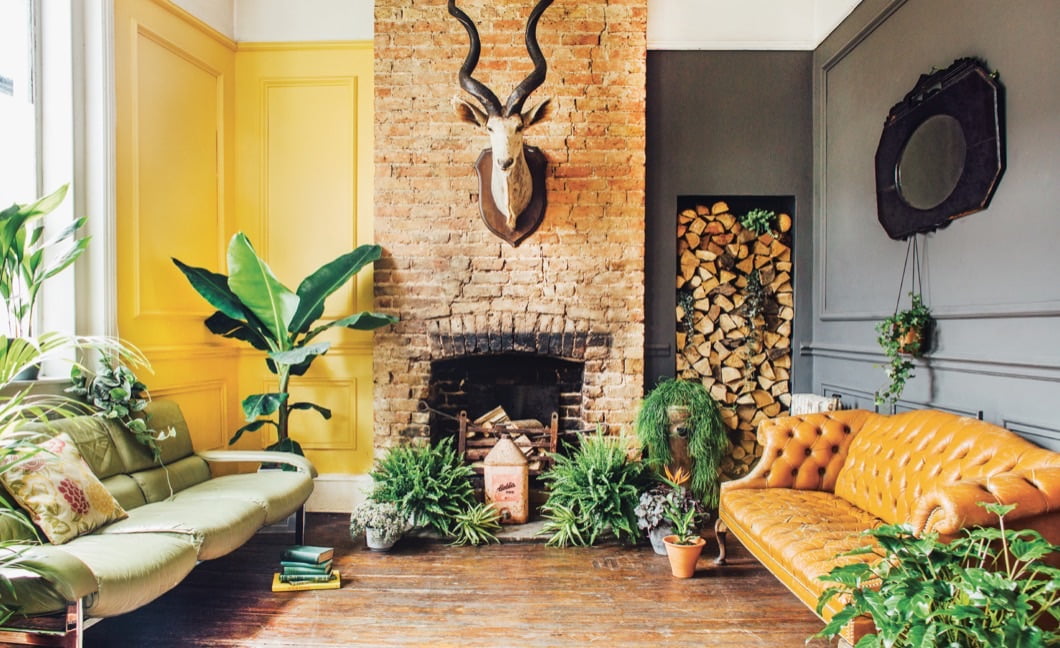
Eight Golden Rules to Start You off on Your Plant Journey
1. Do not drown them: Overwatering is the most common killer for indoor house plants. Find out how to properly water your plants on different ways to water your plant.
2. Let them rest: People are usually surprised to learn that nearly all plants need a rest period, which is usually in winter. During this time, you need to water them and feed them less, and let them be a little cooler.
3. Give them extra humidity: When keeping indoor plants, your central heating and other heat sources can make the air very dry. It is important to increase air humidity by misting your plants ‒ learn how.
4. Watch out for plant trouble: Whether you are an expert or a beginner, there will be times when your plants will experience some trouble. One or two small insects or pests can be removed easily, but if you get an infestation I’m afraid that it is game over. Overwatering isn’t fatal at first, but if you continue to do it, it will kill the plant. Watch out for the first signs your plant is in trouble (How to Spot the Early Signs of Plant Troubles) and stop watering immediately.
5. Plants like to be together: You will have seen the trend of arranging all your plants together for a plant party. Nearly all plants grow better when they have their friends around them. #plantgang
6. Repotting is a skill you need to learn now: Some plants are slow-growing, whereas others you will have to run to catch up with their growth spurts. Learn to repot now, before your collection overgrows your home (Potting).
7. Choose your plants wisely: Sadly, it is impossible to keep a beautiful, rare plant that only survives at perfect jungle temperatures in a cold, small flat. Even if you are a total expert, you cannot make a shade-loving plant survive in a sunny window.
8. Invest in some tools: A plant mister is a must, as you can easily water your plants by misting them and at the same time increase the humidity and reduce dust. Drip trays are great for watering your plants from the bottom, and some good-quality fertiliser will keep your plants looking healthy.
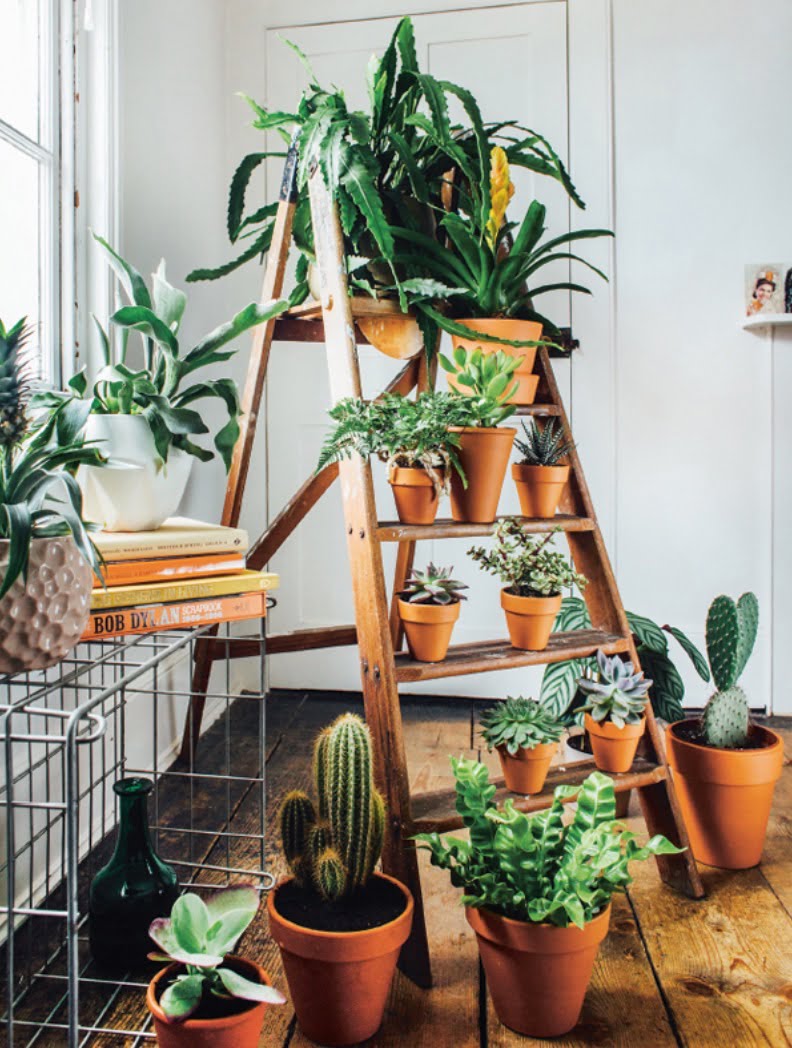
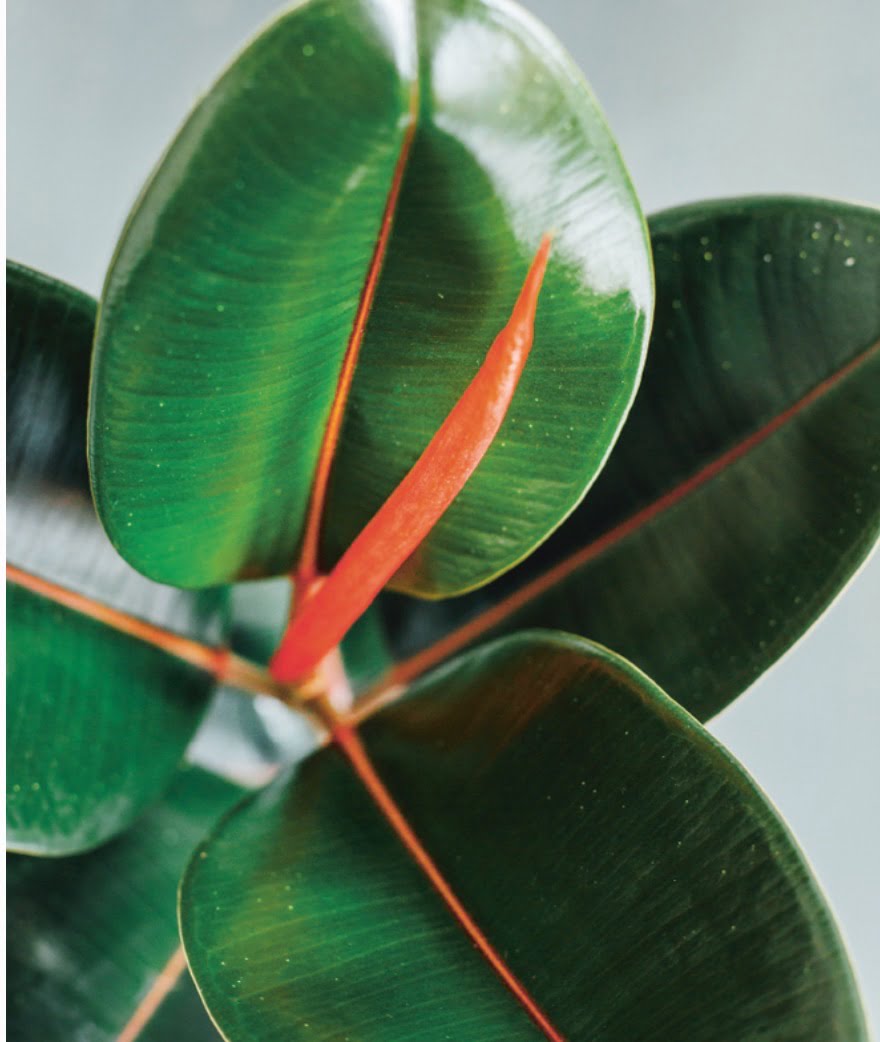
Tiếng Việt


CHỌN LOẠI CÂY PHÙ HỢP VỚI BẠN VÀ NGÔI NHÀ CỦA BẠN


Như vậy, bạn đã quyết định bắt tay vào việc trồng cây trong nhà. Trước hết, hãy đứng lại và nhìn vào từng phòng trong căn nhà của bạn. Sau đó trả lời các câu hỏi sau: Bạn có bao nhiêu không gian? Bạn muốn trồng cây theo phong cách rừng rậm hay thứ gì đó tối giản hơn? Mức độ ánh sáng trong nhà bạn như thế nào? Bạn có không gian để treo, chỗ trống trên tủ cho một vài chậu cây, hoặc cả một tủ sách cần trang trí bằng cây cảnh hay không?
Điều quan trọng là phải suy nghĩ về kích thước cây sẽ phù hợp nhất với không gian của bạn. Một vài chậu cây nhỏ sẽ phù hợp hơn hay chỉ một cây lớn? Những cây lớn cần có đủ chỗ để phát triển cấu trúc và hình thức kiến trúc của chúng, vì vậy không có lý do gì để làm cây thấp đi trong một không gian nhỏ.
Các cây lớn trông thật tuyệt vời trong các khu vực hiện đại, không gian mở với đường nét rõ ràng và phong cách trang trí tối giản. Tuy nhiên, nếu nhà bạn nhiều đồ đạc hơn và có nét cá tính, tôi khuyên bạn nên lựa chọn một số loại cây nhỏ hơn để thêm phần cá tính cho căn nhà.
Nếu bạn chưa quen với việc trồng cây, bạn nên bắt đầu với một vài chậu có cỡ vừa và nhỏ chứa những cây cứng cáp, ít tốn công chăm sóc (Cây dễ trồng cho người mới bắt đầu). Bạn sẽ sớm có được khoảnh khắc vui mừng khi một chiếc lá mới xuất hiện trên cây của bạn.
Tôi sẽ hướng dẫn bạn chọn những loại cây nào trông tuyệt vời trong những chậu cây cụ thể, cũng như những cách kết hợp mà bạn nên tránh. Như một hướng dẫn sơ bộ, tỷ lệ hai phần ba đến một phần ba sẽ giúp cây phát triển tốt. Với một chậu lớn, nên trồng 2/3 là cây và 1/3 là chậu. Nhưng bạn không nhất thiết phải tuân theo quy tắc này, trong quá trình thực hành, bạn có thể sử dụng tỷ lệ để tạo ra hiệu quả tuyệt vời. Các chậu lớn có thể trông thật nổi bật khi được sử dụng để trồng các loại cây thấp để tạo nên nét đặc trưng của chậu cây, chẳng hạn như Cây Dong Vằn (Maranta leuconeura- cây Cầu Nguyện). Tuy nhiên, nếu bạn chọn những cây nhỏ hơn mọc tràn ra mép chậu thì cây sẽ trở nên nổi bật.
Cùng với việc sử dụng chậu, tôi sẽ chỉ cho bạn một số cách khác nhau để tạo phong cách cho ngôi nhà của bạn với cây trồng, chẳng hạn như tạo một hồ cạn (Cách tạo một hồ cạn kín và Cách tạo một hồ cạn mở), treo những bầu cây rêu Kokedama (Làm một Kokedama), hoặc làm một giá treo cây Macramé để treo những cây bám trên trần nhà (Make a Macramé Plant Hanger). Bạn cần chú ý rằng cây trồng và chậu phải phù hợp với phong cách của từng căn phòng, để khu vườn tôn lên nét đẹp nội thất trong nhà của bạn.
Tủ sách và kệ là nơi tuyệt vời để trồng thêm một số cây xanh. Đặt một vài cây giữa những cuốn sách yêu thích của bạn, chẳng hạn như cây Chuỗi Tim (Ceropegia woodii) hoặc cây Trầu Bà Lá Tim (Philodendron scandens). Bàn cà phê hoặc bộ giá đỡ thấp có thể trở thành trung tâm của sự chú ý với một chậu cây nổi bật hoặc một bộ sưu tập các loài mọng nước khác nhau. Tôi tin rằng các loại cây trông đẹp nhất khi được nhóm lại với nhau theo số lẻ, nhưng nếu bạn theo chủ nghĩa tối giản, số lượng cây chẵn được sắp xếp theo hình lưới sẽ phát triển rực rỡ để tạo ra hiệu ứng có cấu trúc, có tổ chức. Tuy nhiên, sự lựa chọn vẫn là của bạn!
Kiến trúc sư nổi tiếng người Đức Mies van der Rohe đã có lời tuyên bố nổi tiếng rằng:
Dần dần, bạn sẽ sớm đam mê chăm sóc bộ sưu tập cây trồng của mình. Một cách quan trọng để chọn ra các loại cây khác nhau trông đẹp mắt là tìm các hình dạng và kết cấu bổ sung cho nhau. Nếu bạn đang hoàn thiện nội thất, những loại cây bạn chọn phải tương thích với không gian bạn đang đặt cây. Không có lý do gì khi đặt một cây Pho Mát Thụy Sĩ khổng lồ (Monstera deliciosa) trong một phòng tắm nhỏ bởi nó trông sẽ không ổn. Cây sẽ phải được cung cấp đủ không gian để toát lên vẻ ngoài điêu khắc ấn tượng của nó. Đừng ngại thử đặt cây của bạn ở một vài vị trí khác nhau xung quanh nhà để xem chúng trông đẹp nhất ở đâu.
Nhiều loại cây nhà thông thường được yêu thích vì những chiếc lá tuyệt vời của chúng, những chiếc lá trông như thể chúng được làm bằng lụa sơn. Đây là điều làm cho thế giới thực vật trở nên kỳ diệu và thú vị. Các cây có hình dạng khác nhau với đốm, nếp gấp, lông, gai và rãnh. Ngoài việc cân nhắc không gian bạn muốn đặt cây, hãy suy nghĩ xem bạn muốn chọn loại cây có những chiếc lá đầy màu sắc, chẳng hạn như cây Hoa Hồng Sơn (Calathea roseopicta) hay thứ gì đó đơn giản và nổi bật như cây Kim Tiền Trung Quốc (Pilea peperomioides).
Một số loại cây cần được chăm sóc nhiều hơn những loại cây khác, vì vậy khi bạn cần xác định liệu bạn nên trồng loại cây lớn điêu khắc hay những chậu Xương Rồng nhỏ và xác định mức độ chăm sóc mà bạn có thể đáp ứng cho cây. Ngoài tính thẩm mỹ của căn phòng, bạn cũng cần quan tâm đến điều kiện môi trường. Một số cây cần nhiều ánh sáng (xem phần Ánh sáng & Bóng râm để biết thêm thông tin về mức độ ánh sáng), những cây khác cần nhiều độ ẩm hơn. Mục tiêu của bạn là mô phỏng môi trường tự nhiên của thực vật để chúng có thể phát triển tốt.
Thực vật cần sáu chất dinh dưỡng quan trọng để tồn tại: carbon, hydro, oxy (từ nước và không khí), nitơ, phốt pho và kali (từ đất trồng) và vì vậy bạn sẽ cần cung cấp các chất dinh dưỡng cần thiết này. Khi trồng dưới đất, ba yếu tố sau sẽ được bổ sung một cách tự nhiên, nhưng vì cây của bạn sẽ sống trong chậu nên bạn cần phải bón lót bằng phân bón theo cách thủ công vì cây sẽ sử dụng hết chất dinh dưỡng. Tôi khuyên bạn nên sử dụng một loại phân bón hữu cơ không chỉ cung cấp chất dinh dưỡng cho cây mà còn cho đất.





Tám quy tắc vàng để bạn bắt đầu hành trình trồng cây của mình
1. Không làm cây chết úng: Tưới nước quá mức sẽ có thể làm chết các loại cây trồng trong nhà. Tìm hiểu cách tưới cây đúng cách bằng nhiều cách tưới cây khác nhau.
2. Để cây nghỉ ngơi: Mọi người thường ngạc nhiên khi biết rằng gần như tất cả các loài thực vật đều cần một khoảng thời gian nghỉ ngơi, thường là vào mùa đông. Trong thời gian này, bạn cần tưới nước và bón phân cho chúng ít hơn, và để chúng trong môi trường mát hơn một chút.
3. Bổ sung độ ẩm cho cây: Khi để cây trong nhà, hệ thống sưởi và các nguồn nhiệt khác có thể khiến không khí rất khô. Điều quan trọng là tăng độ ẩm không khí bằng cách phun sương cho cây của bạn. Hãy tìm hiểu cách thực hiện!
4. Đề phòng các vấn đề xảy ra với cây trồng: Cho dù bạn là chuyên gia hay người mới bắt đầu, sẽ có lúc cây trồng của bạn gặp một số rắc rối. Có thể dễ dàng loại bỏ một vài con côn trùng hoặc động vật gây hại nhỏ, nhưng nếu cây của bạn bị nhiễm bệnh, tôi e rằng sẽ khó có thể cứu chữa được. Việc tưới quá nhiều lúc đầu không làm chết cây, nhưng nếu bạn tiếp tục làm như vậy, điều này sẽ giết chết cây của bạn. Để ý những dấu hiệu đầu tiên khi cây trồng của bạn gặp vấn đề (Cách phát hiện những dấu hiệu ban đầu của bệnh cây trồng) và ngừng tưới nước ngay lập tức.
5. Thực vật phù hợp để trồng cùng nhau: Bạn sẽ thấy xu hướng sắp xếp tất cả các loại cây lại với nhau thành một bộ sưu tập thực vật. Gần như tất cả các loài thực vật đều phát triển tốt hơn khi chúng có bạn bè xung quanh.
6. Thay chậu là một kỹ năng bạn cần học ngay bây giờ: Một số cây phát triển chậm, trong khi những cây khác sẽ phát triển nhanh hơn, vì thế bạn sẽ phải thay chậu để bắt kịp tốc độ phát triển của chúng. Tìm hiểu cách thay chậu ngay bây giờ, trước khi bộ sưu tập cây trồng của bạn phát triển quá mức trong nhà (Chậu cây).
7. Chọn loại cây trồng trong nhà sao cho phù hợp: Đáng buồn thay, không thể khiến một cây đẹp, hiếm thường chỉ sống được ở nhiệt độ trong rừng phát triển tốt trong một căn hộ nhỏ lạnh giá. Ngay cả khi bạn là một chuyên gia, bạn cũng không thể làm cho một cây ưa bóng sống được trong một khung cửa sổ đầy nắng.
8. Đầu tư mua một số dụng cụ: Cần phải có dụng cụ tưới cây để bạn có thể dễ dàng tưới bằng cách phun sương, đồng thời tăng độ ẩm và giảm bụi. Các khay nhỏ giọt rất thích hợp để tưới cây từ phía dưới, và một số loại phân bón chất lượng tốt sẽ giúp cây của bạn trông khỏe mạnh.


Xem thêm các phần khác của sách
